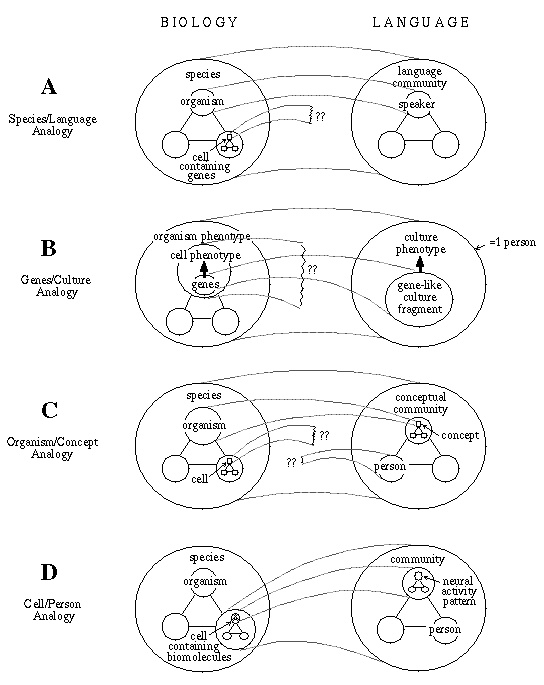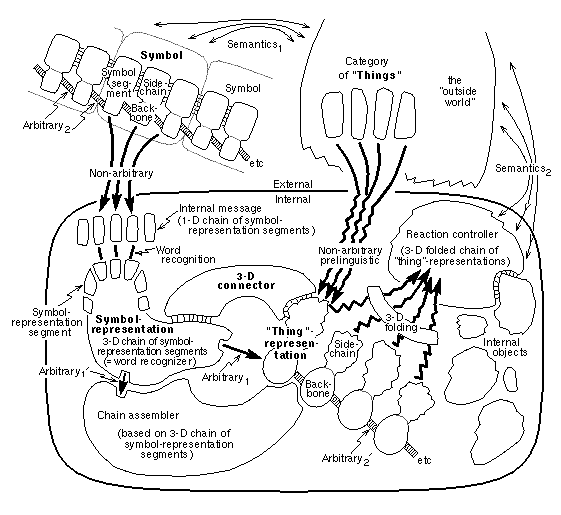Four analogies between biology and language

The intricate phenomena of biology on one hand, and language and culture on the other, have inspired many writers to draw analogies between these two evolutionary systems. These analogies can be divided into four principal types: species/language, organism/concept, genes/culture, and cell/person. I argue that the last analogy--between cells and persons--is the most profound in several respects, and, more importantly, can be used to generate a number of empirical predictions. In Sereno (1991b), the four analogies are each evaluated after briefly describing criteria for a good predictive analogy. In the second part of the paper, the cell/person analogy and predictions deriving from it are explored in detail.

Schematic comparison of part-whole relationships in four analogies between biology and language. In the species/language analogy (A), objects in one system map to objects of approximately the same size in the other system. In the genes/culture analogy (B), small biological objects (genes) map to large cultural objects (gene-like culture fragments). In the organism/concept analogy (C), large biological objects (organisms) map to small cultural/linguistic objects (individual concepts). In both B and C, there are unmapped intermediate-level objects (cells, persons). Finally, in the cell/person analogy (D), small biological objects (cells) map to large cultural/linguistic objects (persons).

A scheme for a symbolic-representational system in action. The three main functions of chains of symbol-representation segments are now illustrated (internal message, symbol-representation, chain assembler). The diagram illustrates in more detail the dynamic process by which chains of symbol segments (upper left, connected by one kind of arbitrary bond) are non-arbitrarily recognized in small groups by the symbol-representation (lower left), which then presents its connected "thing"-representation (lower right, connected to the symbol-representation with a different kind of arbitrary bond) to the chain assembler. A parallel string of "thing"-representations is constructed, which then folds upon itself (sharply wavy lines), forming reaction-controlling devices, which operate upon internal objects (middle right). The gently wavy lines (upper right) signify a pre-systemic relationship.
See Sereno (1991b) for details.
Back to the cogsci homepage